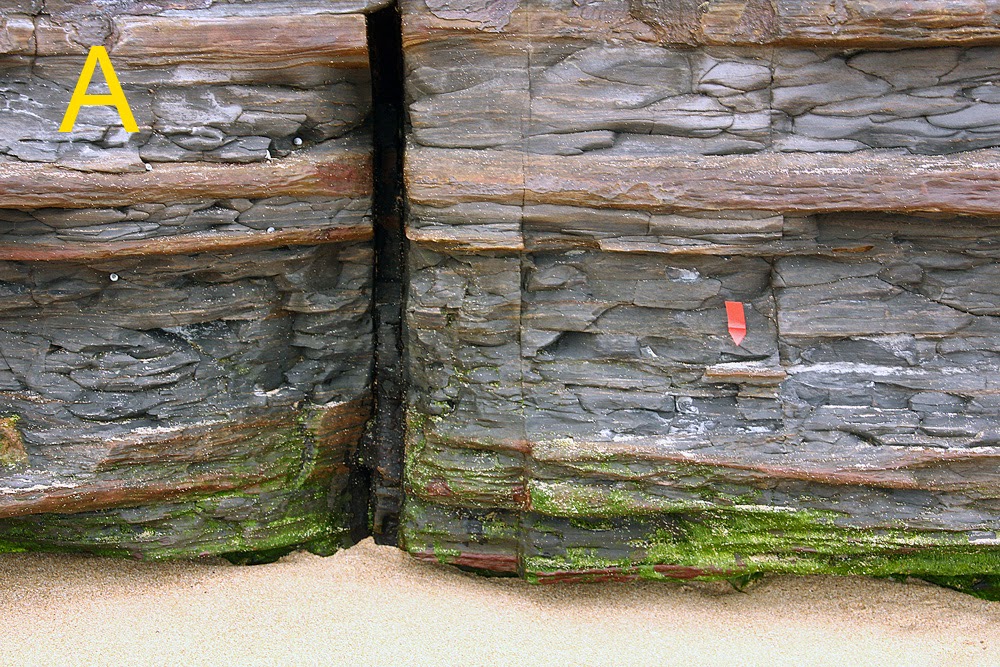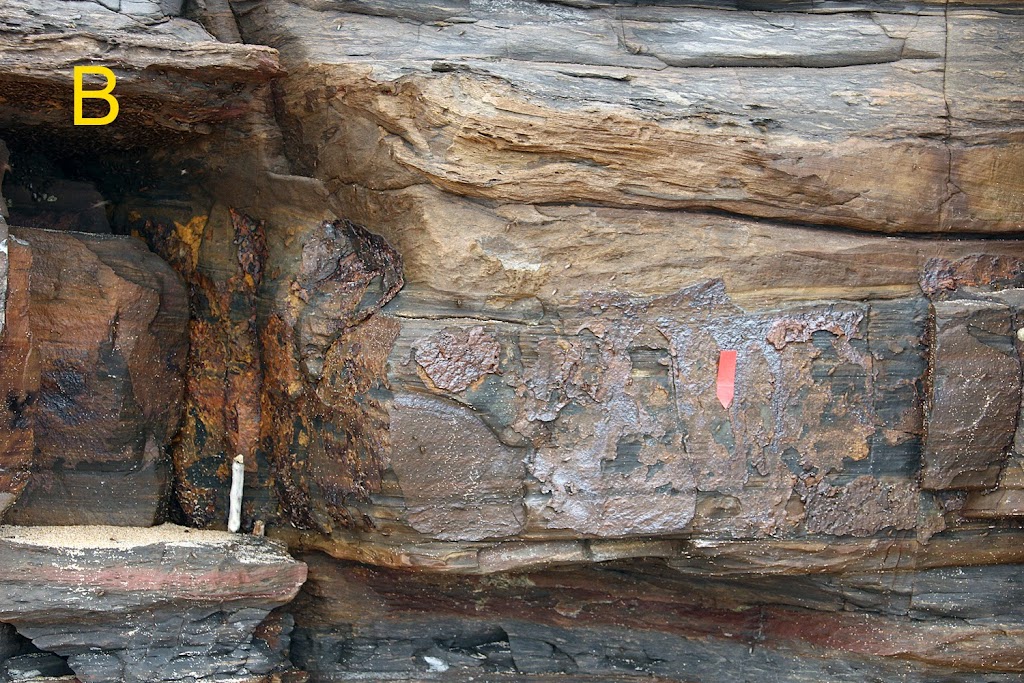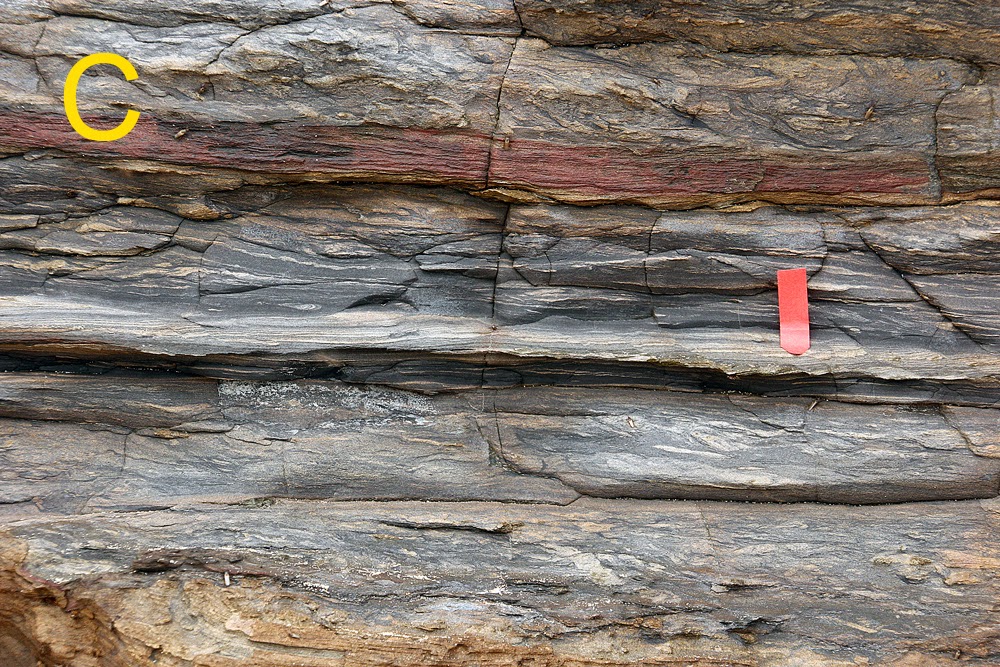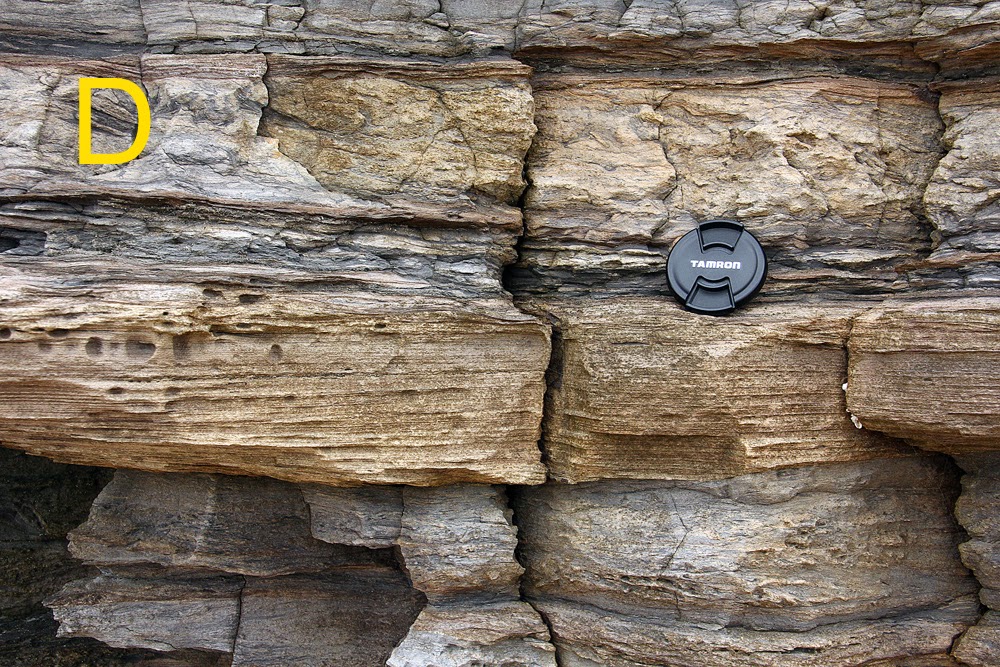I need some assistance with working out what fluvial influences were at play during the formation of this Permian siltstone / mudstone strata.
To give a quick overview these layers were deposited in the Permian along the east coast of Australia. Glaciation and climate controlled sea levels influenced the patterns of sedimentation, how is what I am trying to work out.
The first picture is an overview of the cliff face with the various layers.


A) Due to the tell tale cracking of the layers I would say that these layers formed from mud that dried and cracked, possibly a mudflat. Can anyone offer any further observations?
(The red tag is about 2" and the lens cap is a little bigger 2.5")

B) I do not know much about iron leaching, can anyone shed some light on why these particular layers (mostly made up of horizontal bedding) leach more then other similar bedding later in the strata?

C) I am most curious to learn about what kind of flows would have caused these 'ripples' in the strata? Could the red layer have been caused by local volcanic activity?

D)The horizontal bedding in this photo looks more sandy then the siltstone above and below. Would I be correct in assuming it is more sandy or is it mud that has settled when the area was frozen over?

E) More dried mud?
Above E is coal, this was laid down at the end of the Permian.